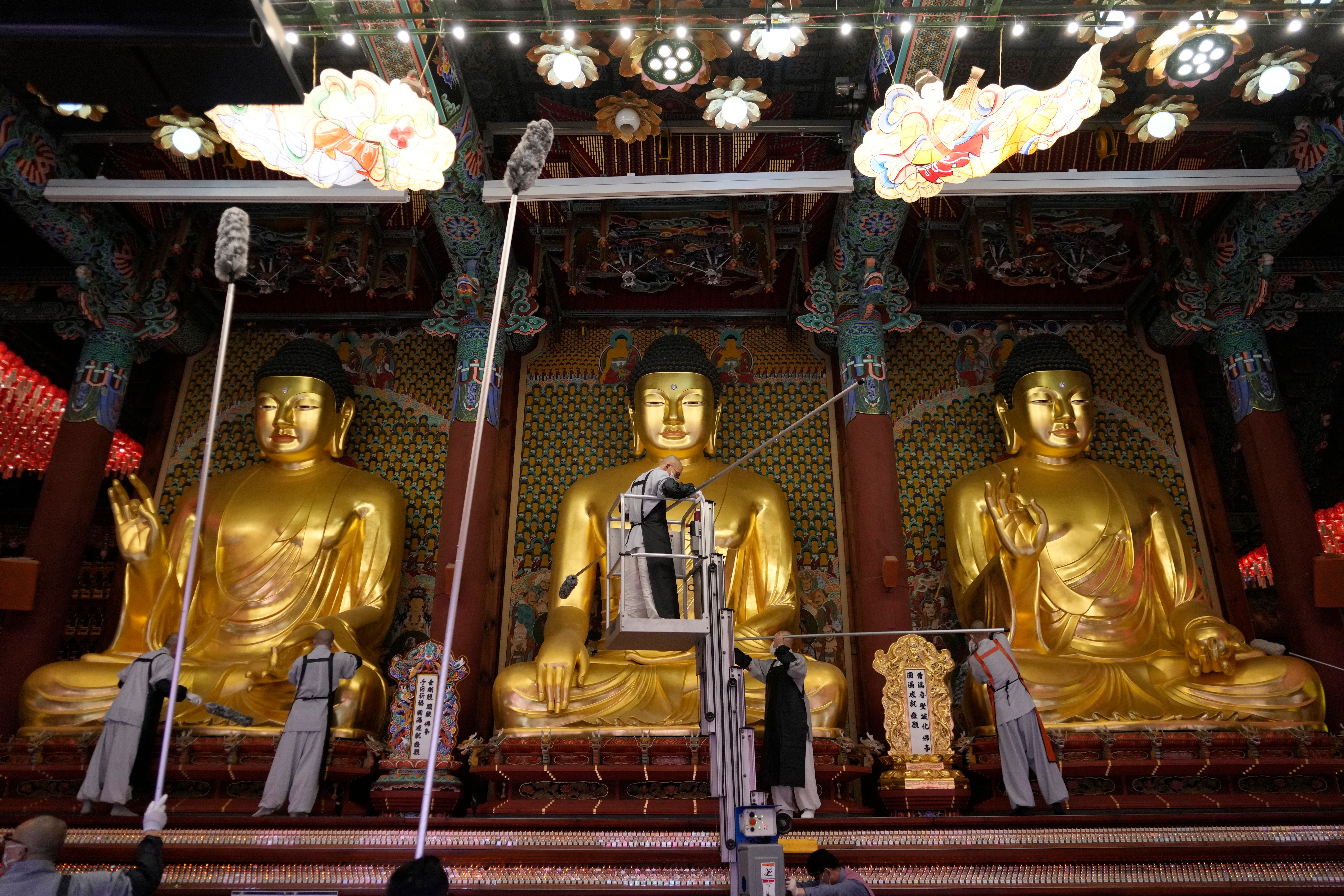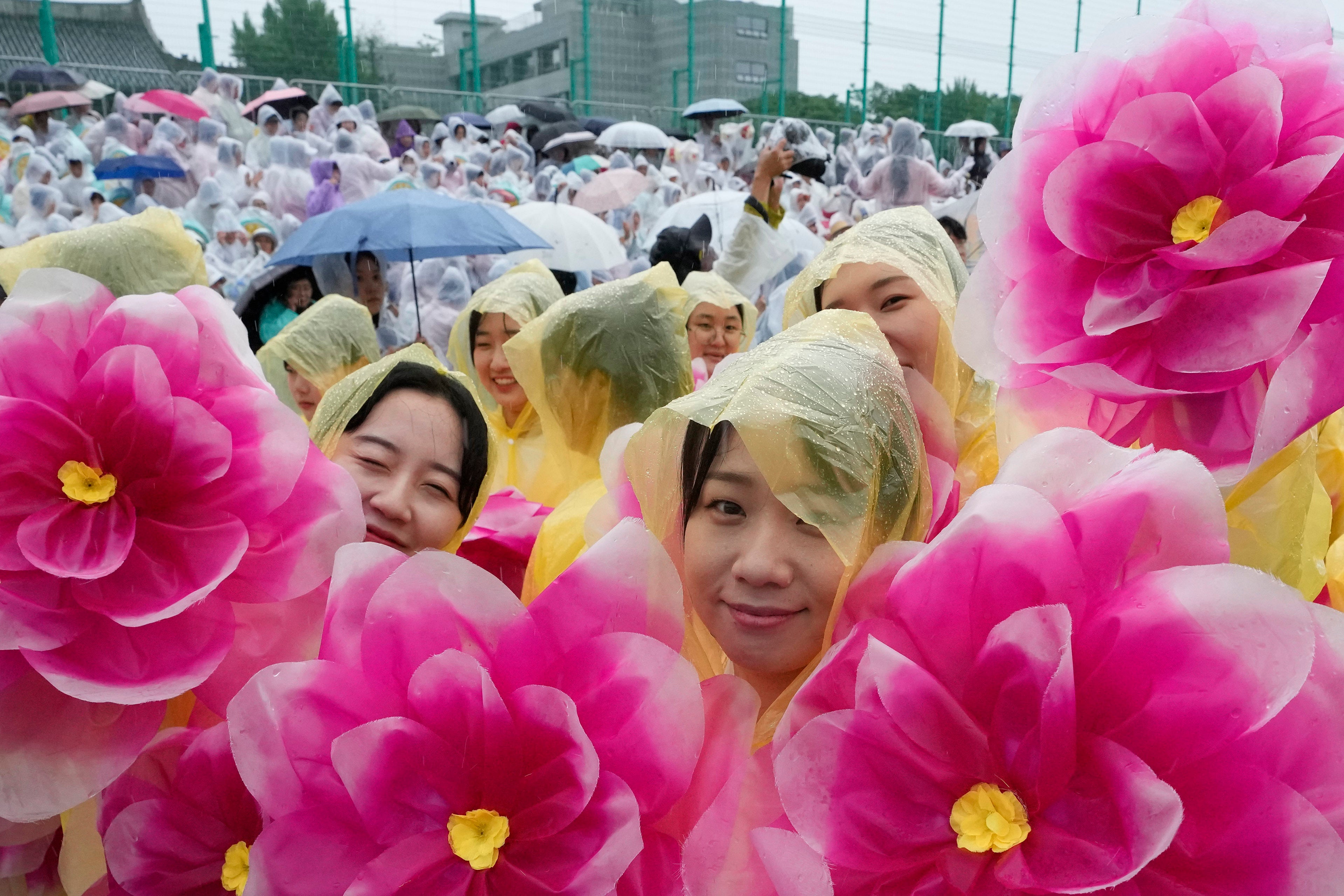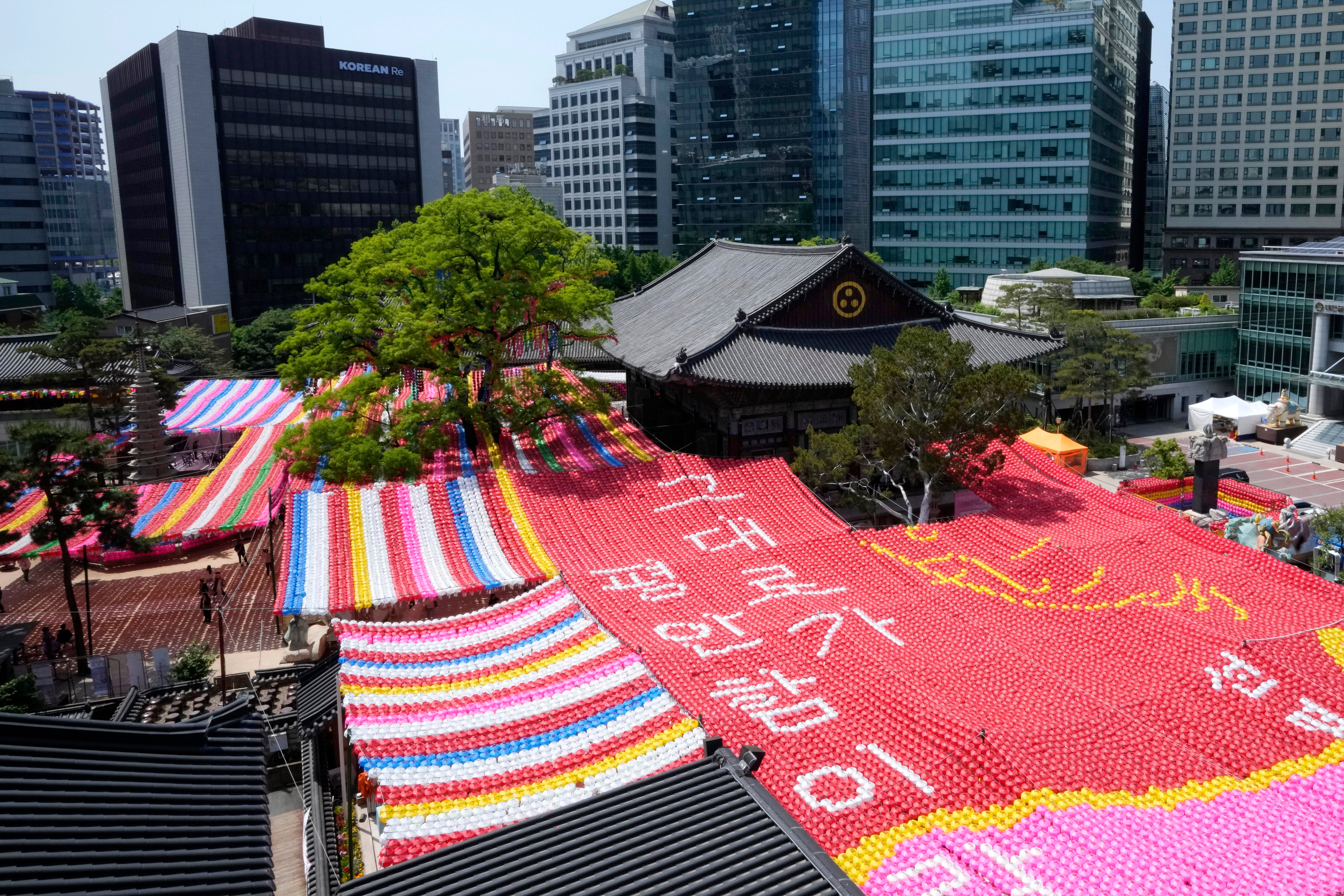When is Buddha’s birthday and how is it celebrated?
Countries in South and Southeast Asia celebrate Buddha’s birthday on the full moon

Your support helps us to tell the story
From reproductive rights to climate change to Big Tech, The Independent is on the ground when the story is developing. Whether it's investigating the financials of Elon Musk's pro-Trump PAC or producing our latest documentary, 'The A Word', which shines a light on the American women fighting for reproductive rights, we know how important it is to parse out the facts from the messaging.
At such a critical moment in US history, we need reporters on the ground. Your donation allows us to keep sending journalists to speak to both sides of the story.
The Independent is trusted by Americans across the entire political spectrum. And unlike many other quality news outlets, we choose not to lock Americans out of our reporting and analysis with paywalls. We believe quality journalism should be available to everyone, paid for by those who can afford it.
Your support makes all the difference.The birthday of the historical Buddha or Shakyamuni Buddha, known as Vesak in several countries, celebrates the birth of the child who became Prince Siddhartha around the end of the 4th century B.C. This is a holy occasion for all Buddhists, but is celebrated on different dates depending on the school of Buddhism or country to which one belongs. In several Asian countries, it is observed on the eighth day of the fourth month of the lunisolar calendar, which this year falls on May 15. In several South and Southeast Asian countries, it is celebrated on the first full moon of May, which falls on May 23.
Siddhartha was born in Lumbini, which today is in Nepal, some 20km from the border with India . His mother, Maya, was the wife of Suddhodana, king of the Shakya clan. According to Buddhist lore, when she conceived, the queen dreamed that an auspicious white elephant entered her womb.
A number of texts recount the child’s miraculous birth, detailing how the baby was received by the gods Indra and Brahma, and took seven steps soon after he was born. He is then believed to have received a cleansing bath from the gods, or dragon kings, depending on the country or culture where the legend originated.
Suddhodana sheltered his son from pain and suffering, believing that keeping him isolated would put him on the path to becoming king. However, he could not protect Siddhartha for long, and the prince began to reflect after witnessing sickness, old age and death. Disillusioned by the impermanence of life, Siddhartha engaged in six years of ascetic practice and attained enlightenment at the age of 35 in Bodh Gaya in northeast India. He then became known as the Buddha, which means “the awakened one.”

How is Buddha’s birthday celebrated?
Buddhists around the world use this time to not only celebrate, but also reflect on Buddha’s teachings and what it means to practice the faith. In many parts of Asia, the sacred day marks not just the birth, but also the enlightenment and passing of the Buddha. In most Asian cultures and the diaspora, Buddhists go to their local temples and participate in chanting, meditation and festivities all day. Families decorate their homes with lanterns and gather for feasts.
Koreas
Buddha’s birthday is a national holiday in South Korea. The highlight of the celebration in Seoul is the lotus lantern festival called Yeondeunghoe, a parade of thousands of colorful, lighted paper lanterns often shaped like lotus flowers that are hung in temples and streets. On Buddha’s birthday, many temples provide free meals and tea to all visitors. Festivities in temple yards and parks include traditional games and various performing arts displays. The luminous display is believed to symbolize the light of Buddha’s teachings.
While Buddha’s birthday is not an official holiday in North Korea, it has been observed in Buddhist temples there since 1988. In 2018, Buddhist monks in North and South Korea held joint services when animosities between their governments eased. But such exchange programs have been stalled in the past few years due to tensions over North Korea’s nuclear program.
China
In China, the faithful do a bathing ceremony that involves pouring scented blessed water over a statue of the infant Buddha whose right forefinger is pointed upwards toward the sky and left forefinger is pointing down to the Earth. According to legend, the Buddha announced shortly after being born that he would have no more rebirths, and the dragons of heaven baptized him with pure water.

Japan
In Japan, April 8 is observed as Buddha’s birthday and is celebrated in Buddhist temples as Hana Matsuri, which means flower festival. On this day, a small “flower hall” is set up on temple grounds and decorated with colorful flowers. A bowl of water with a statue of the baby Buddha is placed in the middle and devotees pour sweet tea on the head of the statue. A priest performs the Kambutsu-e nativity festival recreating Buddha’s birth in the garden of Lumbini.
South and Southeast Asia
Countries in South and Southeast Asia celebrate Buddha’s birthday on the full moon of the second lunar month known as Vesakha or Vaisakha. The Sanskrit word for full moon is Purnima, which is why the holiday is also called Buddha Purnima. The Mahabodhi Temple in Bodh Gaya is decorated on this day and devotees perform special prayers under the bodhi tree under which the Buddha is believed to have attained enlightenment. In India and Nepal, sweet rice porridge is served on this day to recall the story of Sujata, a maiden who offered the Buddha a bowl of milk porridge.
In Malaysia and China, caged animals and birds are set free on Buddha’s birthday because people believe it is good karma. In Sri Lanka, celebrants decorate homes and streets with candles and paper and bamboo lanterns. Festivities feature devotional songs, decorative structures called “pandals,” burning of incense and electric light displays depicting stories from Buddha’s life. In Vietnam, Buddha’s birthday is a still popular festival, but not a public holiday, which it was from 1958 to 1975 in what was formerly South Vietnam.